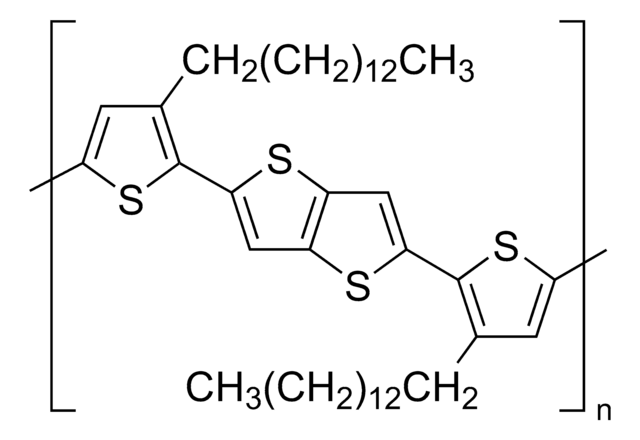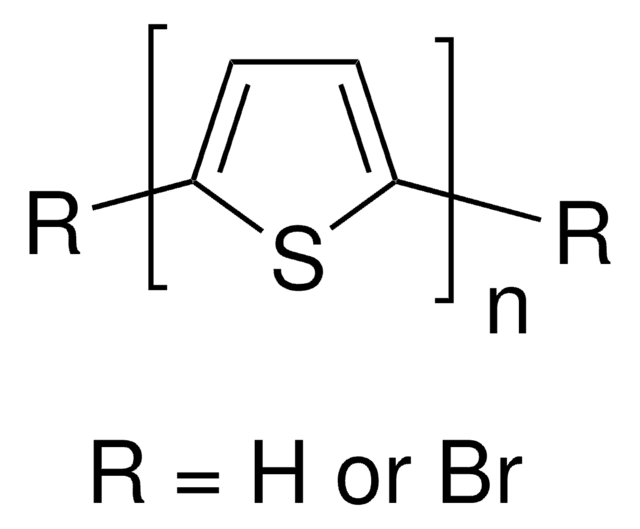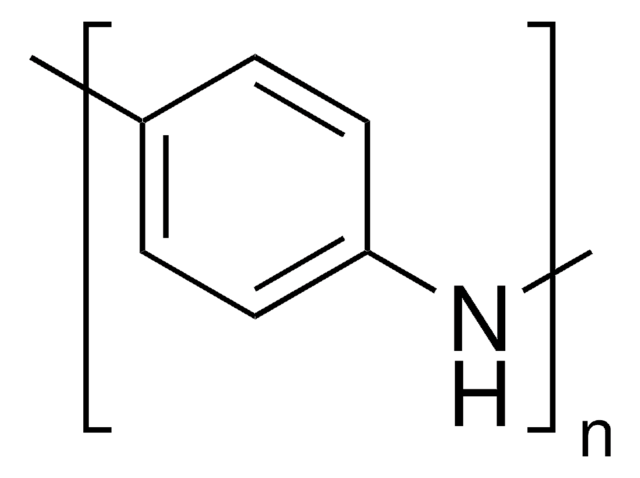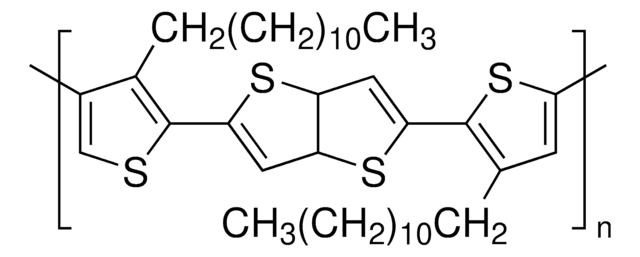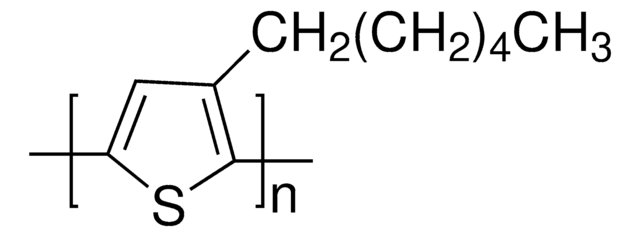906921
PQT-12
Synonyme(s) :
Poly(3,3′′′-didodecyl[2,2′:5′,2′′:5′′,2′′′-quaterthiophene]-5,5′′′-diyl), Poly(4,4′′-didodecyl[2,2′:5′,2′′:5′′,2′′′-quaterthiophene]-5,5′′′-diyl)
About This Item
Produits recommandés
Description
Band gap: 2.27 eV
Eox = 0.45 V
Solution processable (chloroform, chlorobenzene, etc)
LIFT transferable
Forme
solid
Poids mol.
Mw 10,000-25,000 by GPC
Couleur
brown
Solubilité
>5 mg/mL (in CHCl3)
λmax
473 nm in toluene
Énergie orbitale
HOMO -5.24 eV
LUMO -2.97 eV
Température de stockage
15-25°C
Catégories apparentées
Application
Code de la classe de stockage
11 - Combustible Solids
Classe de danger pour l'eau (WGK)
WGK 3
Point d'éclair (°F)
Not applicable
Point d'éclair (°C)
Not applicable
Faites votre choix parmi les versions les plus récentes :
Certificats d'analyse (COA)
Vous ne trouvez pas la bonne version ?
Si vous avez besoin d'une version particulière, vous pouvez rechercher un certificat spécifique par le numéro de lot.
Déjà en possession de ce produit ?
Retrouvez la documentation relative aux produits que vous avez récemment achetés dans la Bibliothèque de documents.
Articles
Dr. Chan and researchers highlight flexible transistors are the building blocks of next-generation soft electronics. Among all the reported material systems that can be fabricated by researchers, such as circuits, biosensors, stretchable displays, and others,1–5 small molecular weight organic semiconductors are among the most promising candidates for flexible transistor applications. For these small molecular weight organic semiconductors, the semiconductor forming the conductive channel dominates the device performance.
Professor Tokito and Professor Takeda share their new materials, device architecture design principles, and performance optimization protocols for printed and solution-processed, low-cost, highly flexible, organic electronic devices.
Professor Chen (Nankai University, China) and his team explain the strategies behind their recent record-breaking organic solar cells, reaching a power conversion efficiency of 17.3%.
Notre équipe de scientifiques dispose d'une expérience dans tous les secteurs de la recherche, notamment en sciences de la vie, science des matériaux, synthèse chimique, chromatographie, analyse et dans de nombreux autres domaines..
Contacter notre Service technique